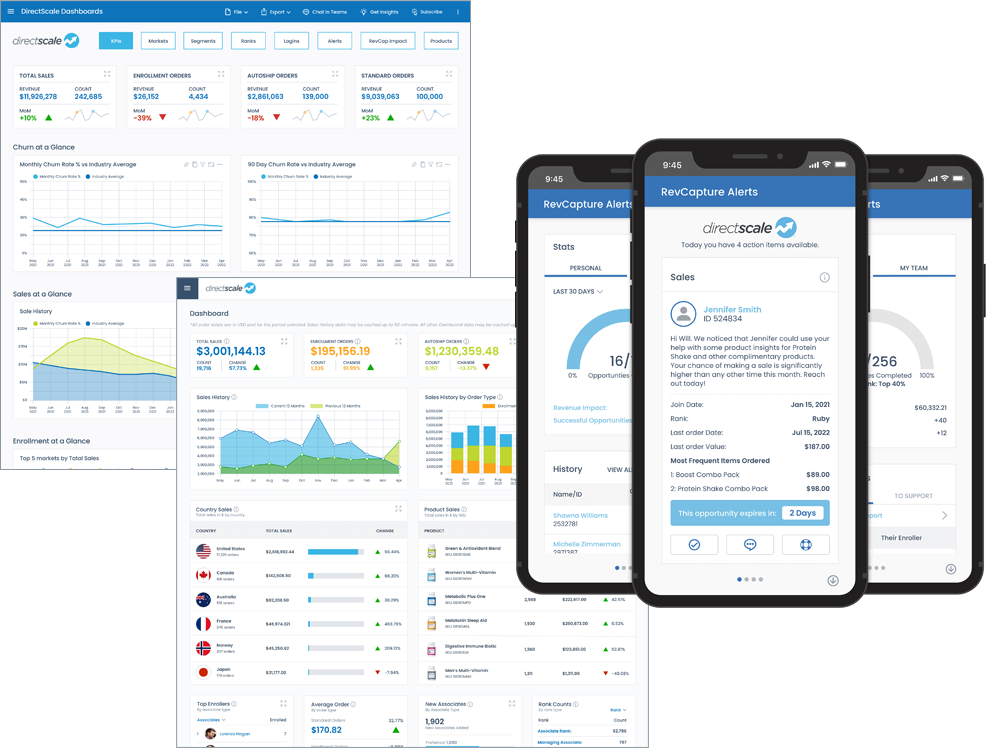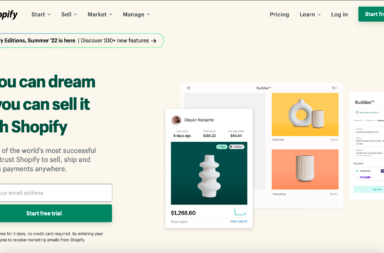How many times have you scrolled through your Facebook or Instagram feed and come across a product or service that got your attention?
Maybe you stopped for a second to view it or you even clicked to find out more. Or maybe you kept scrolling past it. But when it popped up in your mind later, you went back on the hunt for it.
Sounds familiar? This is it—you’ve been the target of social selling.
Social selling is the latest wave in the tech-driven consumer revolution, and you should be part of it.
These days, consumers are looking for trustworthy relationships with brands they can relate to and connect with.
For businesses, this means meeting customers where they are rather than forcing them to leave their comfort zone with cold calling for instance.
However, if you want to succeed, you have to have a strategy.
Posting a few posts on LinkedIn or Instagram with a website link is not enough, even if your content is absolutely mind-blowing, using the nicest visuals and proofreader services.
Luckily, there are plenty of awesome social selling tools which can help you create, execute, and measure your social selling strategy.
Read on to learn more!
Statistics: Why You Should Be Tapping into Social Selling
According to Aberdeen Group, 73% of sales representatives using social selling as part of their sales process did better than their colleagues who didn’t use social selling. On top of that, they exceeded quota 23% more often.
Not convinced yet? According to SalesforLife, companies who have consistent social selling processes are 40% more likely to hit revenue goals than non-social sellers.
Social selling just perfectly taps into the customer-centric buying landscape that defines consumers’ behavior today.
Instead of blindly promoting your products at every opportunity, it’s far more effective to meet your customers on platforms they’re already spending a lot of time on.
Oh and—if you want to learn more about social selling statistics, we have compiled a comprehensive list of them in this blog post.
Using Social Media for Business
Social selling is all about using social media to connect with prospects and provide them with value in an effort to ultimately sell your product or service.
Today, the social media business is a tool—a very powerful one.
It’s all about creating a systematic and customized strategy to make direct sales via social media in a way that your specific audience is open to.
Your consumers are looking for a trustworthy relationship with your brand. They want to relate and connect with you.
There are five key elements involved in creating a successful social selling strategy that wins customers over:
- Target market research and identifying key social platforms
- Creating engaging, valuable content that tackles consumer problems
- Building credibility through thoughtful discussions
- Creative campaigns that stand out and make a difference
- A consistent strategy that continues to bring in new customers
Using social selling tools can help you:
- Understand where your audience is the most active
- What content they’re interacting the most with
- Post regular, sales-driven content at the right time
- Ultimately create a strategy that you can stick to
- Be consistent with your social media content
How Social Selling Tools Help Generate Sales
If your goal is to generate more sales and boost revenue in your business, social selling can be the final piece of the puzzle.
Here’s how social selling tools can massively help transform your sales.
1. Know Your Buyer’s Persona
First things first: Who is your audience?
It is absolutely vital whom you’re targeting in the first place. Without this knowledge, you might end up promoting content on the wrong platform or missing the mark with your messaging.
Who wakes up in the morning and thinks, “I am going to buy something today”? Probably nobody. Instead, your potential buyers do research. They evaluate their options and potential suppliers before committing to purchasing.
Nowadays, 81% of shoppers carry out online research before buying, and an enormous 74% turn to social media for product inspiration.
Your social media channels are now one of the most important steps in your sales strategy. Knowing how to leverage them properly can turn your sales around for the better.
Social selling tools dig deep to discover the most common journeys your buyers take to make a purchase from you. Not only can they map out a route (which will then help you optimize each step), but they can also track past purchase behaviors.
Sprinklr—a customer experience management system—wanted to test their product so they used a social selling tool to find out exactly who their customers were and the kind of content they wanted.
The tool helped them gather the information they needed to build a solid relationship with leads and continue to engage them in a meaningful way.
By monitoring their prospect’s feeds, they were able to find out what their audience is interested in and what their biggest challenges are, and then use these insights to explain how their solution will help.
The end result is the social feed packed full of attractive content they know their audience will love—like short Sprinklr Coffee Club videos.
2. Optimize the Marketing & Sales Funnel
Once you’ve figured out who you’re targeting and where you’re best placed to target them, social selling tools can help you identify key parts of the marketing funnel where consumers regularly make decisions.
There are three main stages in the buyer’s journey:
- The awareness stage. This is where consumers become aware they have a problem that needs solving or a need for a product, but they don’t know what product they need or where to start looking for it
- The consideration stage. This is where consumers know what it is they need, but they’re weighing up their options about which brand or product to go for
- The decision stage. This is where consumers have decided what it is they want to buy, but might have some objections before they hit the buy button
Social selling tools can help you figure out what interactions customers need at each stage of the cycle.
For example, someone in the awareness stage probably isn’t going to be interested in reviews about your best-selling product because they don’t even know they need your product yet.
IBM’s “intelligent listening” program is a great example of using social selling tools to target different stages of the sales cycle.
The aim of the program was to learn what conversations around cloud computing were taking place on social media and what key trends were being discussed. IBM implemented a social selling tool to find hot topics and content that fit the context of the discussions at each and every stage of the sales funnel and shared them across social media.
The end result was 4x more orders than the same time period the year before. Simply by listening to their audience’s needs and serving them strategic content when they needed it, IBM skyrocketed their sales.
3. Measure and Tweak in One Place
Even if you have created a great social selling strategy, it can be tricky to keep on top of it and remember what you need to post and when & where you need to post it.
Technology can massively help here. Luckily, there are some ground-breaking social selling tools that can help you stay on track while measuring your results so you can continue to optimize the process.
For instance: if you roll out your social selling strategy and quickly discover that Instagram isn’t as powerful as Facebook, you can change your strategy to focus mainly on Facebook and minimize the time & effort you spend on Instagram.
Likewise, if you find that consumers respond more positively to UGC (user-generated content) rather than company-crafted photos, you have the insights you need to post more of that.
Creating a successful social selling strategy is all about finding out what works with your audience—something that will be different for every brand.
However, despite the industry, social selling tools can come super-handy. Make your life easier and try using some of these great social selling tools!
Powerful Social Selling Tools to Use
The modern market is filled with a variety of social selling tools, but there are a few that stand out amongst the competition in terms of their usability and effectiveness.
Here are our favorites:
Canva
You are right if you think that Canva isn’t necessarily a social selling tool. Yet, for your social selling, you need great, visually appealing content. And that’s when Canva plays its important role.
Canva is a content creation tool that can be used for social selling. It was made for both individuals and teams to create and download beautiful designs in any format and for any occasion. Do you fancy modern presentations, appealing Facebook & Instagram posts, or easy-to-follow infographics for Stories? Canva has it all.
The tool offers a free drag and drop interface allowing you to create content that is easy on the eye using Canva’s free design modules.
We absolutely love Canva—but if you want to try some other tools, Pixelied or Crello might be your good bet.
Buffer
Buffer is a fantastic social selling tool that allows you to clearly plan your social media content. Thanks to Buffer, you can simply schedule your posts and track the performance of your content shared. Therefore, it is a valuable content distribution tool.
With direct posting available for Facebook, Twitter, Instagram, and LinkedIn, Buffer helps you stay on top of your social selling strategy while saving time in the content sharing process.
Buffer allows you to build your audience and grow your brand on social media. However, if you are not a fan of Buffer, you can alternatively use Hootsuite or Sprout Social.
LinkedIn Sales Navigator
When it comes to prospect hunting tools for your social selling, LinkedIn Sales Navigator is your best bet.
This great tool helps you target the right buyers, understand key insights, and make your outreach personalized. So it is not a surprise that for many sales professionals, “social selling” means LinkedIn.
The tool is enriched with some of the advanced search filters that bring a detailed view to the tip of your fingers and improve your sales process. LinkedIn Sales Navigator is trusted by more than 80% of the Forbes Cloud 100.
An alternative might be FRONTLINE Selling (previously known as PeopleLinx).
Nimble
You’ve probably heard before that having a good CRM (Customer Relationship Management) is crucial for efficient maintenance & creating relationships with your customers.
Nimble might be a good option for you, especially if you are a small business. It is a CRM designed for the social media age. The platform organizes your buyers and leads and allows you to keep track of your entire relationship with them—including your social media interactions.
Nimble easily allows you to compile all social media data into specific records for each lead that you are nurturing, tracking your engagement with the person as you go.
InstaChamp by MobileMonkey

81% of people use Instagram to help research products and services. And 2 in 3 people say the network helps foster interactions with brands. It is absolutely crucial to stay in touch with your fan and potential customers! InstaChamp can help you with that.
InstaChamp by Mobile Monkey is a simple tool for increasing engagement and automating lead generation and customer service on Instagram and Facebook.
Instead of manually replying to every DM, you can save time with InstaChamp’s automated answering service.
The tool lets you activate auto-replies using customizable templates that send the same note to all users or different responses based on keywords in the messages received.
You’ll be able to provide information, request the user’s contact info, say thanks, or let them know when you’ll respond personally.
DirectScale

We’ve saved the best for last! DirectScale, now an Exigo company, is a software that allows direct sellers to create personalized web office experiences for their distributors that are customized for their specific product and brand.
Through the web office, distributors can quickly find out updates and grab social copy and content to share with their followers. And, to top it all off, there is an in-built revenue optimization tool that aggregates all of the sales data.
This gives direct sellers the chance to get a top-level overview of what’s working on social media and what’s not, which means they can continuously tweak their strategy until it’s getting them the results they want every single time.
Conclusion: Start Social Selling Today
Social selling tools like DirectScale and the others mentioned in this piece are specifically designed to help you stay on track while measuring your results so you can consistently and successfully optimize your social media channels for sales.
As consumers spend more and more time online, social selling is becoming an increasingly important marketing tactic.
Creating a strategy that generates sales over and over again can seem like an impossible task, particularly when you bear in mind just how many social platforms there are and how many different marketing tactics are talked about every day.
However, there are solutions out there that can help you both short and long term.
Using a social selling tool can make the process a whole lot easier and clearer. Not only do they help you plan where you need to focus your energy and who you need to focus it on, but they also help you execute your strategy and keep you on track for success with in-built insights and cold, hard data.
So don’t hold back—start using social selling tools right now!
Read more:


